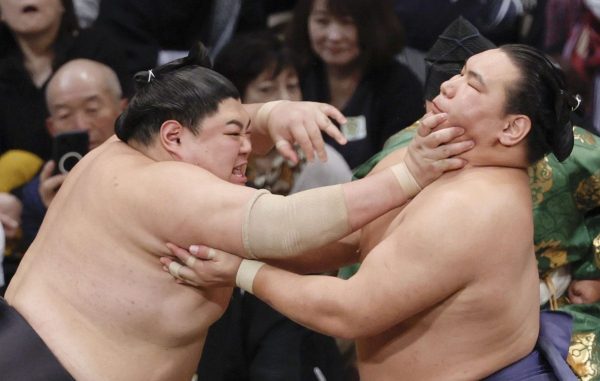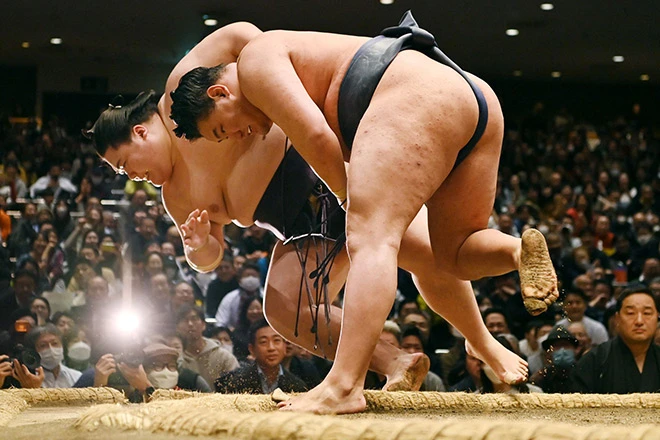The country of Japan holds one of the oldest and richest histories in the world. Its preservation of its own culture is revered by many historians and takes great pride in itself as a nation. And with its rich history comes one of its proudest cultural arts, the art of Sumo.
The history of Sumo spans hundreds of years, all the way back to the first Sumo match in 23 B.C., when the founder of Sumo, Nomi no Sukune, fought the self-proclaimed “Strongest Man”, Taima no Kehaya. Over centuries, Sumo has implemented itself as one of Japanese culture’s most beloved and iconic arts and still holds itself to such a title to this day.
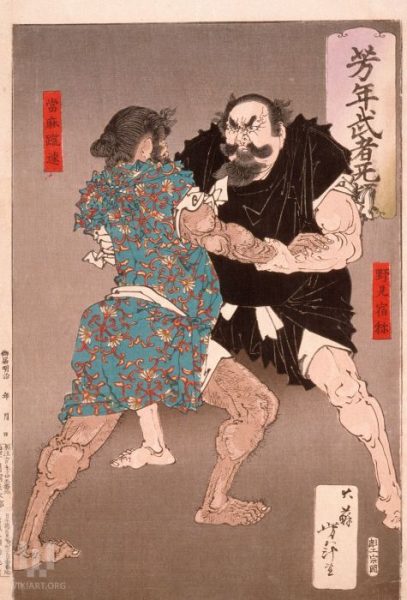
At first glance, Sumo might not seem like one of the most appealing sports or martial arts out there. There’s no glamorous advertising for it, many sports channels aren’t exactly fawning over it either, and how many times a day would you hear, “I just can’t wait for the upcoming Sumo match!”? In this day and age where the opportunity to view a multitude of different sports and martial arts is almost as easy as breathing, it is understandable for some to wonder how sumo kept its high popularity over the years. However, once you dive deeper into the modern following, you’ll see why it is able to hold its power.
If there’s one word you should know before getting into modern Sumo, it’s one that is able to describe it heavily as a whole: discipline. It might sound crazy, but Sumo wrestlers, also known in Japanese as “rikishi”, are one of the most dedicated and disciplined athletes in the modern age of sports. Unlike most athletes, rikishi live strictly by the traditional way of Sumo. Once someone becomes a rikishi, they are to live in a communal training stable with other rikishi, otherwise known as a “heya”. The daily life of these athletes is highly strict, following a traditional regiment that rikishi before them had also followed. When these rikishi aren’t competing in Sumo tournaments, they are training. The daily schedule of a rikishi can be followed by five main events: sleeping, eating, training, free time and more training. In Japanese culture, the career you choose is highly expected to be the career you’re meant to be in, your meaning in life almost, so it makes sense that for the country’s own national sport, its athletes give their all to it, from day to night. While other athletes may train for the passion of their career, rikishi view training as the meaning of their life.
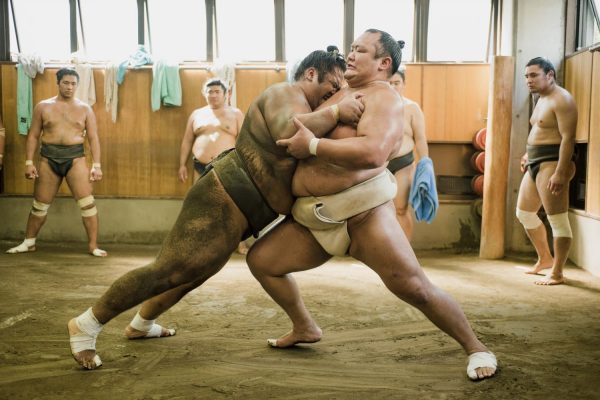
Another difference between an active rikishi and other athletes is their lifestyles outside of training. Many athletes of course train themselves in their field, pushing themselves to their own limits so that they can excel in their art. However, as we all know, this isn’t all that they do. Many are able to balance a life outside of their professional career and still enjoy many pleasures offered outside of their respective art. In Sumo, however, this isn’t exactly the case. Aside from having to live their lives based on a highly strict and busy schedule, rikishi themselves must follow a heavy set of rules even outside the competitive ring, or “dohyō”. Almost every way the rikishi live, from their meals to the way they dress, is usually dictated by the Japan Sumo Association. Sumo wrestling follows a hierarchy of different ranks and titles, each held by rikishi based on their success in matches during “honbasho”, which are the 6 grand-annual Sumo tournaments; you can think of it as the Super Bowl of Sumo. This hierarchy translates to respect among the rikishi, as well as obedience towards seniors and superiors. Not just this, but these ranks even translate to certain rikishi’s freedoms, with lower ranked rikishi not being able to do as much, while even sometimes having to do thankless jobs by order of seniority. Fortunately, over the years, the abuse of power within these ranks has lessened, but Sumo still holds strong to these respectful titles.
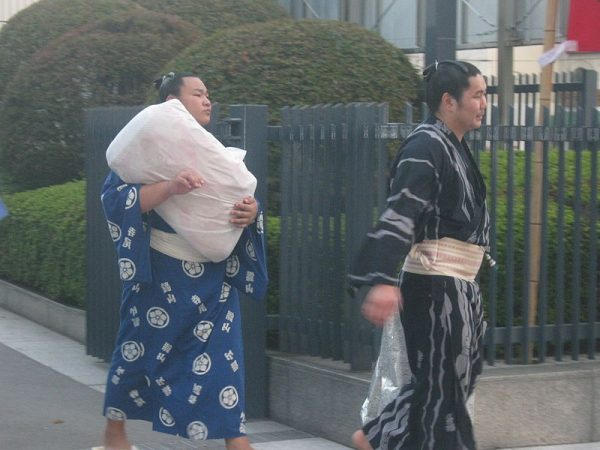
The way of Sumo is an extremely disciplined one. It is the rikishi’s discipline towards their art that plays a heavy role in Sumo’s popularity. They all work hard to ensure that audiences are able to experience Sumo’s entertainment but traditional aspects as well.
Of course, it’s not just the rikishi who contribute to Sumo’s success, but the very people who keep it successful, the audience. Sumo has a wide fan base in Japan, and even then some from overseas. While not as big as any major sports nowadays, fans of the ancient art are extremely loyal. Sumo’s fan base is predominantly older and is mainly attracted to it due to its very strict and traditional features. These fans make sure to fill up every stadium seat during Sumo tournaments, as well as purchase many different Sumo-related products to show their love and support. Not just this, but Sumo’s following has also not only been able to keep its popularity over the years but also gain even more. Last year, Tokyo news agency, Kyodo News, reported that the tickets for all 90 days of honbasho already sold out, a phenomenon that had not happened since 1996.
This doesn’t mean that modern Sumo hasn’t had its bumps. Over the years, specifically from the mid 2000s to the mid 2010s, there were a multitude of scandals found within the Sumo industry. Many of these controversies are related to gambling, fixed matches, and even ties to the “Yakuza”, a highly feared organized crime syndicate in Japan. However, one of the most infamous scandals in Sumo was the Tokitsukaze Stable Hazing Scandal. It was a horrifying incident where 17-year-old trainee Takashi Saito, whose ring name was Tokitaizen Takashi, resided inside of the Tokitsukaze Stable, where his fellow rikishi accidentally killed him as part of a brutal hazing ritual done to new recruits. This incident, along with many of the other aforementioned scandals, heavily affected Sumo’s reputation as a whole.
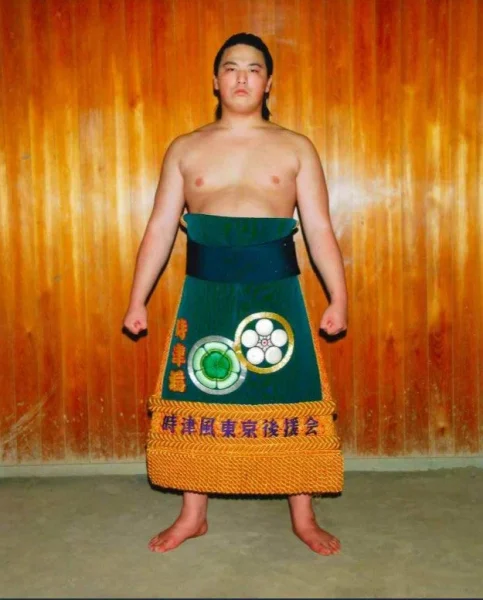
However, Sumo has since started to regain its popularity and respect among fans and has made sure to take proper precautions to try and stop any more controversies from happening in the future. This still doesn’t mean that Sumo isn’t going through any problems currently. Although its popularity continues to rise, it struggles to find more recruits for the art, as in 2024, the industry hit its lowest number of prospects to turn pro since 1973.
Sumo might not be the biggest sport or martial art right now, and it is far from perfect. But the discipline and loyalty held by both the rikishi and their fans prove that Sumo is here to stay, and the art as a whole will stop at nothing to ensure its place in not just ancient culture, but implement its name into the modern world as well.
